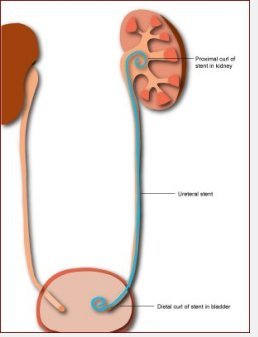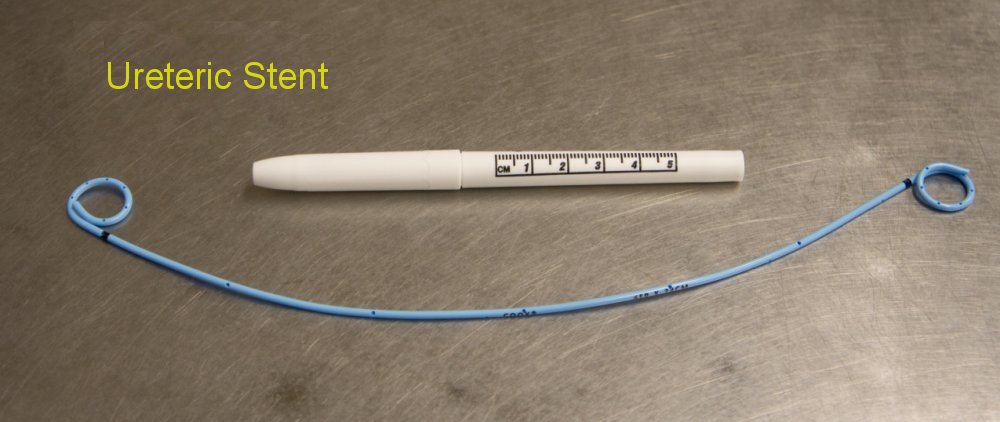|

What is a Ureteric Stent?
A ureteric stent is a soft flexible tube that is temporarily placed in the ureter to make a channel for the urine to pass and allow drainage of the kidney.
A stent is thus placed when a urologist is concerned that the urine may not drain well through the ureter either due to blockage or following a surgery on or near the ureter or following a procedure involving insertion of an instrument into the ureters and kidney.
This is crucial as stagnation of urine even for a small period builds up pressure in the kidney and also increases the risk of infection, which may lead to kidney damage. Stents used for an adult patient vary from 24 cm to 30 cm in length. One end of the stent is placed in the kidney and the other end is placed in the bladder. To prevent displacement the stent is coiled at its ends. Stents are usually placed for short periods, which may vary from a few weeks to few months and are removed thereafter.
Usually, a stent is placed under general anaesthesia by using a cystoscope that is passed through the urethra into the bladder. The stent is then placed in the ureter and kidney through the opening of the ureter in the bladder. An X-ray confirms the correct position of the stent.
Removal of stent is a minor procedure which only takes a few minutes. This is performed using a flexible cystoscope, usually, under local anaesthesia. Sometimes, a thread is attached to the lower end of the stent and stays outside the body through the urethra. Such stents can be removed just by pulling the thread. However, removal using cystoscopy may be required if the string breaks while pulling.
Side Effects and complications?
Some patients may feel the stent and could experience one or more of the following symptoms:
-
• Discomfort or pain in the bladder and kidney region. Sometimes, pain or discomfort may also be felt in the groin, urethra or genitals. Pain or discomfort is more noticeable after urination and physical activity.
-
• Urinary symptoms may include small amount of blood in the urine, urgency to pass the urine, increased frequency of urination, sensation of incomplete emptying of bladder and incontinence problem in women.
-
These symptoms usually resolve within 24 to 48 hours when the stent is removed.
• Complications associated with ureteral stent may include stent infection, encrustation or migration and hyperplastic urothelial reaction.
Ureteral stent development is underway which is working on new ideas on stent design, composition material and stent coating to eliminate the adverse effects of ureteral stent usage and improve its long-term efficacy. Your urologist will discuss the different types of stents that are available and can be helpful in your condition.
|

